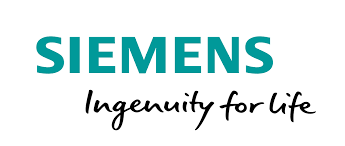North America Organic Food Market Industry Overview, Size, Share, Growth Trends, Research Insights and Forecast (2025–2032)
North America Organic Food Market size was valued at USD 128.24 Bn. in 2024 and the total North America Organic Food Market size is expected to grow at a CAGR of 13.50% from 2024 to 2032, reaching nearly USD 353.18 Bn. by 2032.
Format : PDF | Report ID : SMR_2721
North America Organic Food Market Overview
Organic food refers to food products that are grown and processed without the use of synthetic chemicals, such as fertilizers, artificial pesticides, genetically modified organisms (GMOs), antibiotics and growth hormones. Organic agriculture depends on many natural methods, such as soil health and ecology, to maintain any crop rotation, manure and control organic insects.
North America's organic food markets are growing rapidly in 2024, due to rising health awareness, strong government certification standards and supermarkets. The North American organic food market dominates by companies such as Danone, General Mills and Organic Valley. These key players keep important market shares due to their strong brand image and diverse organic product portfolio. Opportunities in North America's biological food market is increasing demand for plant-based and clean label products, an increase in online sales and consumer focus on local sourcing.
In North America, the USMCA allows tariff-free trade of most organic foods between the U.S., Canada and Mexico, ensuring smooth market flow. In 2025, the proposed 25% tariff cost on some imports can increase the cost, although the result is still uncertain.

To get more Insights: Request Free Sample Report
North America Organic Food Market Dynamics
Increasing consumer health awareness to Drive the North America Organic Food Market
U.S. consumers are rapidly informed about the expected health risks associated with pesticides, synthetic fertilizers, genetically modified organisms (GMOs) and artificial products. This health-concerned mindset pushes to buyers to seek safe and natural options, therefore, rising demand for certified organic products. Organic products often contain high levels of low pesticide residues and beneficial antioxidants, making them more attractive to health-conscious people. This change is strong between the millennials and Gen Z, who actively read food labels and research materials. For example, organic baby food market has seen a strong growth as health-conscious parents choose pesticide-free, additive-free products for their children.
Increasing disposable income to drive the growth of North America's organic food market
The purchasing power of the United States consumers is strong, and they easily spend on premium goods, such as organic foods, offered at a premium price compared to conventional food products. A large number of customers enjoy high incomes. They are ready to pay for a healthy lifestyle and select organic foods that are considered safe, nutritious and environmentally friendly. This is inspired by the advantages of organic food and increasing consciousness about issues related to man-made pesticides and additives in traditional foods. As a result, consumers are paying a premium for organics and demanding full demand on supermarkets, specialty stores and the internet.
Shorter Shelf Life to Restrain the North America Organic Food Market Growth
The organic products, especially fresh dairy and meat, require rapid transport, cold chain storage and sharp turnover to maintain quality. Thus, it increases operating costs for distributors and retailers, who will have to manage tight inventory timelines and high wastage risks. For consumers, repeated purchases can be discouraged due to frequent deterioration, especially when the price of organic items is higher than traditional options.
North America Organic Food Market Segmentation
By Product Type, the organic foods market is segmented into organic drinks, organic cereal and grains, Organic Meat, Poultry and Dairy products, Organic Spices and Pulses, Organic Processed Food, Organic Fruits and Vegetables and Others. The most dominant product types in the organic foods market are organic fruits and vegetables. Since they consume every day and conventional farming has a large potential for pesticides, which results in consumers choosing for organic foods. This product are viewed as healthy, fresh and safe because they are grown naturally without the use of synthetic chemicals. Organic fruits and vegetables are also simpler for farmers to cultivate methodically than more complicated processed foods or meat items, adding to higher availability and variety.

Based on Distribution Channel, the organic food market is segmented into Supermarkets and Hypermarkets, Specialty Stores, Convenience Stores, Online and Others. Supermarkets and Hypermarket segments are dominating the distribution channels type in the organic food market because of their widespread access, diversity and more consumer trust. These stores provide a comprehensive classification of certified organic products at the same location, making the organic food purchase convenient for busy consumers. Their supply chain ensures the availability of the product continuously, and their ability to offer competitive prices and promotion attracts a large number of customers. Moreover, dedicated organic corridors, in-store branding, and private-labelled organic lines promote reliability, strengthening supermarkets and hypermarkets leadership in the market.
North America Organic Food Market Regional Analysis:
United States
In North America's organic food product market, the United States stands as the most prominent country due to its large consumer base, well-established organic agriculture and supporting regulatory environment. U.S. consumers have shown a strong priority for health-conscious and environmentally sustainable food options, demanding to proceed to premium organic products with rising disposable income. U.S. A strong retail also benefits from infrastructure, including national chains such as Whole Foods, Walmart, and Costco, which provide wide access to organic products. Also, USDA's National Organic Program has created clear standards and certification processes, encouraging the development of consumer trust and market development.
North America Organic Food Market Competitive Landscape
In the Organic Food Market in North America, General Mills Inc. and Danone North America are the top players in North America. General Mills Inc. has established a diverse biological appearance with brands such as Annie’s, Cascadian Farm, and Muir Glen, offering products in grains, snacks, and packaged foods. The company emphasizes regenerative agriculture and domestic sourcing, which strengthens its commitment to permanent practices. In contrast, Danone leads with categories dominating categories such as organic and so tasty, milk, yogurt and plant-based drinks in the North America Organic dairy segment. While General Mills Inc. benefits from a wide product range and large-scale retail distribution, Danone focuses more on clean transparency, stability and nutritious innovation in the dairy space. Together, both companies shape consumer trends and set benchmarks for quality and development in the North American biological food industry.
North America Organic Food Market Recent Development
- In May 2025, Danone acquired a majority stake in Kate Farms for extend its presence in the United States (U.S.) organic medical nutrition. Danone's strategy is to expand in plant-based organic products and specialized nutrition, especially for consumers with medical feeding needs.
- in April 2024, General Mills announced new partnerships with American Farmland Trust and Rodale Institute, due to the development of regenerative agricultural practices. These projects are intended to expand regenerative practices in key areas in California and the Northern Great Plains, towards meeting the company's vision of propelling regenerative agriculture on one million acres. acres of farmland by 2030.
|
The Organic Food Market Scope |
|
|
Market Size in 2024 |
USD 230.40 Bn. |
|
Market Size in 2032 |
USD 586.97 Bn. |
|
CAGR (2025-2032) |
12.40% |
|
Historic Data |
2020-2024 |
|
Base Year |
2024 |
|
Forecast Period |
2025-2032 |
|
Segments |
By Product Type Organic Beverages Organic Cereal and Food Grains Organic Meat, Poultry and Dairy Organic Spices and Pulses Organic Processed Food Organic Fruits and Vegetables Others |
|
By Distribution Channel Supermarkets and Hypermarkets Specialty Stores Convenience Stores Online Others |
|
|
Regional Scope |
North America- United States, Canada, and Mexico |
North America Organic Food Market Key Players:
North America
- Danone North America (U.S.)
- General Mills Inc. (U.S.)
- Organic Valley (U.S.)
- Amy’s Kitchen (U.S.)
- Hain Celestial Group (U.S.)
- Nature’s Path Foods (Canada)
- Aurora Organic Dairy (U.S.)
- Sprout Organics Inc. (U.S)
- SunOpta Inc. (Canada)
- Eden Foods, Inc. (U.S.)
Frequently Asked Questions
General Mills Inc. and Danone S.A. are the major players in the organic food market
The United States is the most dominant Organic Food Market.
In May 2025, Danone acquired a majority stake in Kate Farms to expand its footprint in the U.S. organic medical nutrition market.
Increasing consumer health awareness is the key driver in the Organic Food Market.
1. North America Organic Food Market Introduction
1.1. Study Assumptions and Market Definition
1.2. Scope of the Study
1.3. Executive Summary
2. North America Organic Food Market: Competitive Landscape
2.1. SMR Competition Matrix
2.2. Key Players Benchmarking
2.2.1. Company Name
2.2.2. Service Segment
2.2.3. End-User Segment
2.2.4. Revenue (2024)
2.2.5. Geographical Presence
2.3. Market Structure
2.3.1. Market Leaders
2.3.2. Market Followers
2.3.3. Emerging Players
2.4. Mergers and Acquisitions Details
3. North America Organic Food Market: Dynamics
3.1. North America Organic Food Market Trends
3.2. North America Organic Food Market Dynamics
3.2.1. Drivers
3.2.2. Restraints
3.2.3. Opportunities
3.2.4. Challenges
3.3. PORTER’s Five Forces Analysis
3.4. PESTLE Analysis
3.5. Regulatory Landscape by Region
3.6. Key Opinion Leader Analysis for the Global Industry
3.7. Analysis of Government Schemes and Initiatives for Industry
4. North America Organic Food Market: Market Size and Forecast by Segmentation (by Value in USD Million) (2024-2032)
4.1. North America Organic Food Market Size and Forecast, By Product Type (2024-2032)
4.1.1. Organic Beverages
4.1.2. Organic Cereal and Food Grains
4.1.3. Organic Meat, Poultry and Dairy
4.1.4. Organic Spices and Pulses
4.1.5. Organic Processed Food
4.1.6. Organic Fruits and Vegetables
4.1.7. Others
4.2. North America Organic Food Market Size and Forecast, By Distribution Channel (2024-2032)
4.2.1. Supermarkets and Hypermarkets
4.2.2. Specialty Stores
4.2.3. Convenience Stores
4.2.4. Online
4.2.5. Others
4.3. North America Organic Food Market Size and Forecast, By Country (2024-2032)
4.3.1. United States
4.3.2. Canada
4.3.3. Mexico
5. Company Profile: Key Players
5.1. General Mills Inc. (U.S.)
5.1.1. Company Overview
5.1.2. Business Portfolio
5.1.3. Financial Overview
5.1.4. SWOT Analysis
5.1.5. Strategic Analysis
5.1.6. Recent Developments
5.2. Danone North America (U.S.)
5.3. Organic Valley (U.S.)
5.4. Amy’s Kitchen (U.S.)
5.5. Hain Celestial Group (U.S.)
5.6. Nature’s Path Foods (Canada)
5.7. Aurora Organic Dairy (U.S.)
5.8. Sprout Organics Inc. (U.S)
5.9. SunOpta Inc. (Canada)
5.10. Eden Foods, Inc. (U.S.)
6. Key Findings
7. Industry Recommendations
















